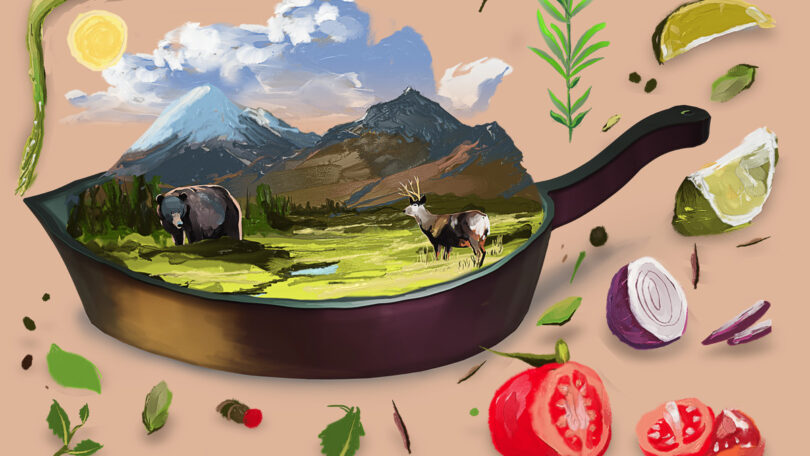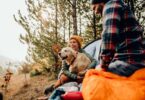As an outdoor enthusiast, you will probably be considering the best food and drink suitable to fuel your body. Obviously, traditional food and drink can be enjoyed but there is an added advantage of energy foods and drinks as they can aid digestion, are convenient, usually have a long shelf life, and are easy to carry on your adventures.
Hunters are often faced with the challenge of having low energy levels if they are not prepared. If you go unprepared, it can be a long day, and your hunting experience may not be as pleasurable.
That’s why it’s important to take food or drinks that offer you more energy while you’re out on the hunt.
While stocking up on Ammo from the likes of Palmetto State Armory, you need to give thought to your food and drinks. Too many people forget to bring food on hunting trips, and this can result in low energy levels all day long. This doesn’t mean you have to have Red Bull or Monster drinks though. It’s important to know the differences between various energy drinks before deciding which one you should bring along with you on your hunting trip.
Food & Drink Planning

img sourcfe: unsplash.com
There is much information to consider when deciding which would best suit your needs. Details such as the calories, fat, carbs and protein content, and some products are specifically aimed at being consumed before, during or after an activity. Choices available come in the form of bars, gels, bites and chews, sports drinks and recovery drinks. You can also choose from organic, vegan, vegetarian, gluten-free, and non-GMO options.
Details to help decide which nutrition is most suitable for your activities will be the number of calories, and how many you need to eat per hour will depend on the intensity and length of activity you will be pursuing, but between 200 and 300 calories per hour will normally be ideal. Most of the energy bars and drinks etc are formulated within this range.
What you need to consider
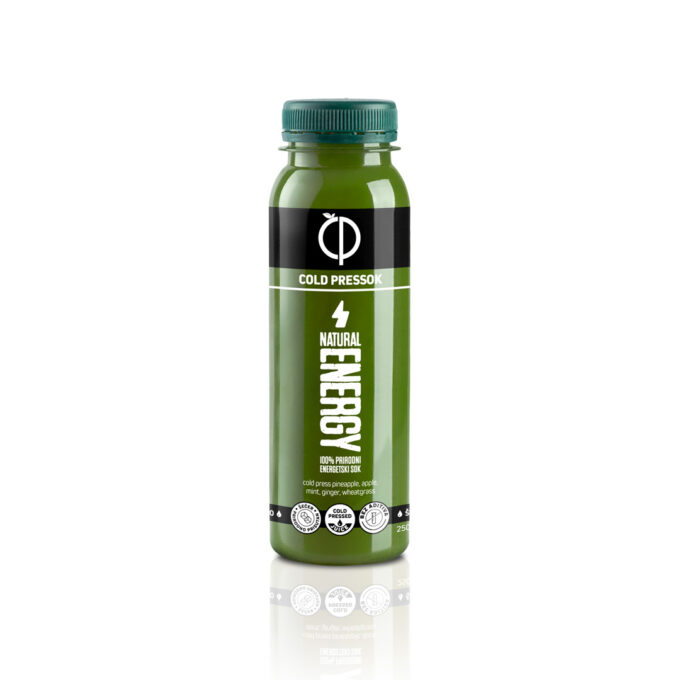
img source: coldpressok.com
Carbohydrates will be your main energy source so that the higher the level of activity and the length of time you are exercising the more carbohydrates you will need. Take into account that the majority of people can only process approximately 60 grams of carbohydrates per hour and eating or drinking more can often put you at risk of an upset stomach.
Protein is needed to help our bodies recover and rebuild tissue after activities. It also provides sustained energy on long endurance activities.
Whilst most energy foods are low in fat some products which are designed as meal replacement bars or bars specifically for endurance athletes will contain more fat.
Sodium is usually listed as sodium chloride, citrate, selenite, molybdate, benzoate, and bicarbonate and they are more commonly known as electrolytes.
These ingredients are essential in metabolizing carbohydrates for the proper functioning of muscles and to help keep you hydrated.
Vitamins and minerals which the body naturally burns through exercise and activity are included in most energy products. Energy bars generally have the highest number of vitamins and minerals overall.
Amino acid blends Leucine, valine and isoleucine are often added to gels only and are proteins which are broken down and used by the body to help construct muscles and keep them in good shape.
A variety of sweeteners are used in place of sugar in some performance drinks, gels and chews, such as honey, agave and stevia.
Caffeine is contained in some bars, gels,chews and drinks to give an extra energy boost. Caffeine enhanced products are usually clearly marked in case you choose to avoid them.
Energy foods and drinks are produced to help enhance each stage of a workout or outdoor adventure, before, during and after, thus helping to fine tune your nutrition intake.
When to eat and drink
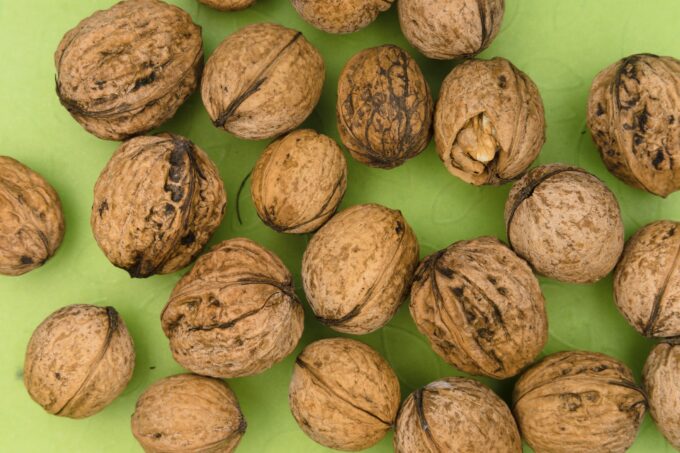
img source: unsplash.com
Food or beverages to be consumed before activity are formulated to provide an elevated consistent energy level over an extended period of time. They usually include a balanced mix of complex carbohydrates, protein, and fiber. Some are suitable for eating minutes before activity begins, although a longer lead time of one to two hours is often recommended, especially if the item includes fat or protein. Many bars fall into this category.
Products to be consumed during activity are designed for easy digestion and absorption into the bloodstream. The goal is to provide sustained energy through a gradual rise (not spike) in energy, followed by a slow gradual decline.
Chews, gels, and beverages are favored due to their simplicity. For endurance activities lasting more than a few hours, many athletes will also eat bars and/or drink, sport’s drinks containing calories and protein.
After the activity, and mostly used to aid recovery, products fortified with proteins, amino acids, and other muscle-restoring elements to help hasten cell repair in the body are used. Bars, drinks, and supplements being commonly consumed.
Meal Bars
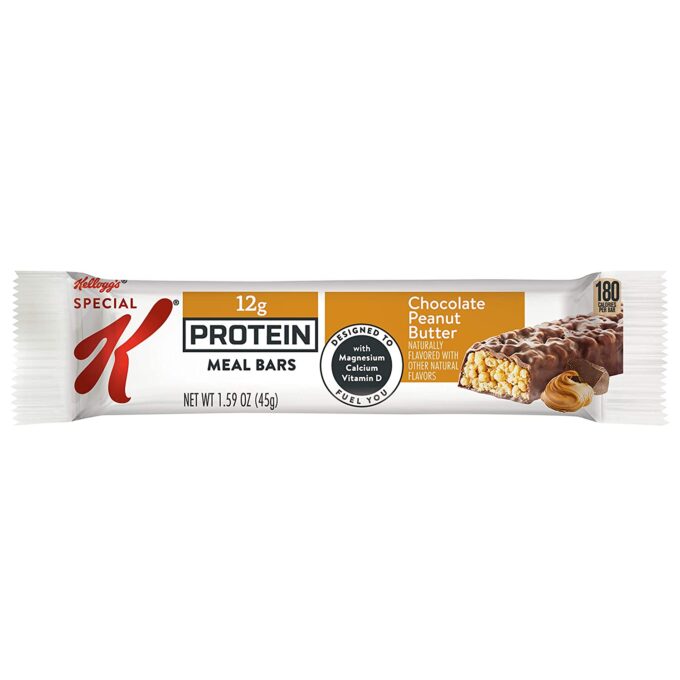
img source: amazon.com
There are many varieties of Bars to choose from for before and after activity. Many are high in carbohydrates, low in protein and fat which makes a good combination to consume just before or after any endurance activities, such as a hike, bike or trail run that may last a couple of hours or longer. The high-grade carbs in bars provide an endurance boost during a workout, and afterwards they will help replenish glycogen (energy reserves) in muscles.
Sustained energy during workouts – solid food is suitable as long as your stomach is able to handle it during activity and you plan to be out for more than a few hours, but bars can also be a good way of introducing some added protein and fat into your diet for sustained energy. If solid food will upset your stomach then a sports drink may also be preferable as they also contain protein and calories.
Some energy bars are produced to help your body rebuild tissue and recover after exercise, and they contain significant amounts of protein about 10g – 20g per bar. These protein bars are specifically recommended for eating after a workout or exercise. It is recommended that you drink plenty of water when eating an energy bar as they are usually dense and chewy and more easily digested with a generous water intake.
Gel’s
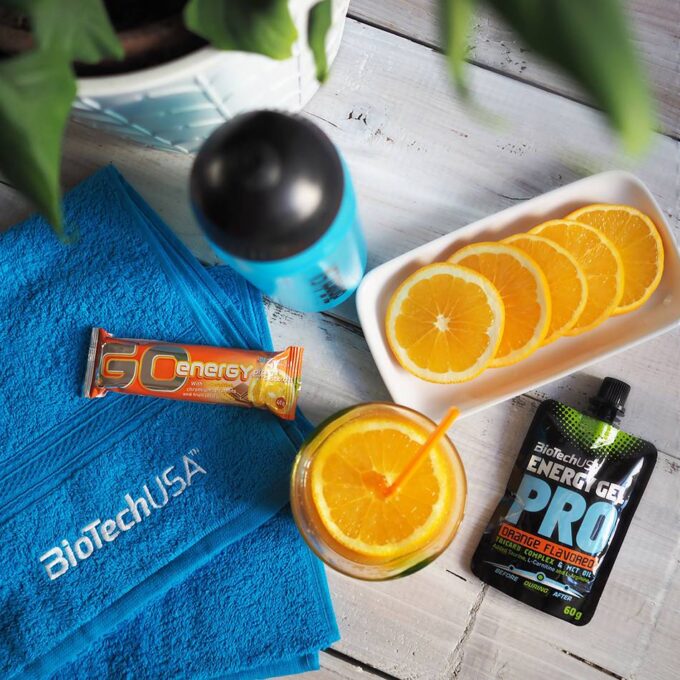
img source: en.biotechusa.com
Energy gels are extremely popular with hikers, cyclists or runners for on the go use. They are syrupy, semi-liquid products that usually have high concentrations of carbohydrates which swiftly deliver easy-to-digest energy and some electrolytes to replace those lost while working out.
Gel packs are small and light (1oz or 2oz) making them easy to pack anywhere. For any activities which last less than 3 hours gels can provide sufficient energy to keep you going, but on longer outings you may need to incorporate bars or drinks. Gels should also be followed with a drink of water.
Chews
If you don’t like the texture of the gels you may prefer bites or chews. They are produced in varying consistencies some are like gumdrops, while others are like jelly beans.
Bites and chews provide the same function as the gell, infusing the body with carbohydrates for energy and electrolytes such as sodium and potassium, which you lose while sweating.
They are designed mostly for eating while working out, and can also provide enough energy during activities for up to a few hours.
Drinks

img source: lifestyleasia.com
Sports drinks are designed to replace electrolytes that your body loses when you are sweating a lot. The major electrolytes in the body including sodium, potassium, calcium and magnesium play an important role in bodily processes which involve your heart, nerves and muscles. When you get low on electrolytes you may feel fatigued and your performance can drop off.
Recovery drinks – Are beverages with a high protein and higher in calorie content, are designed more for recovery and should therefore be consumed after any strenuous exercise. Providing protein to depleted muscles can possibly help them rebound more quickly.
Performance supplements are an added way to add vitamins, nutrients and electrolytes without any calories.

